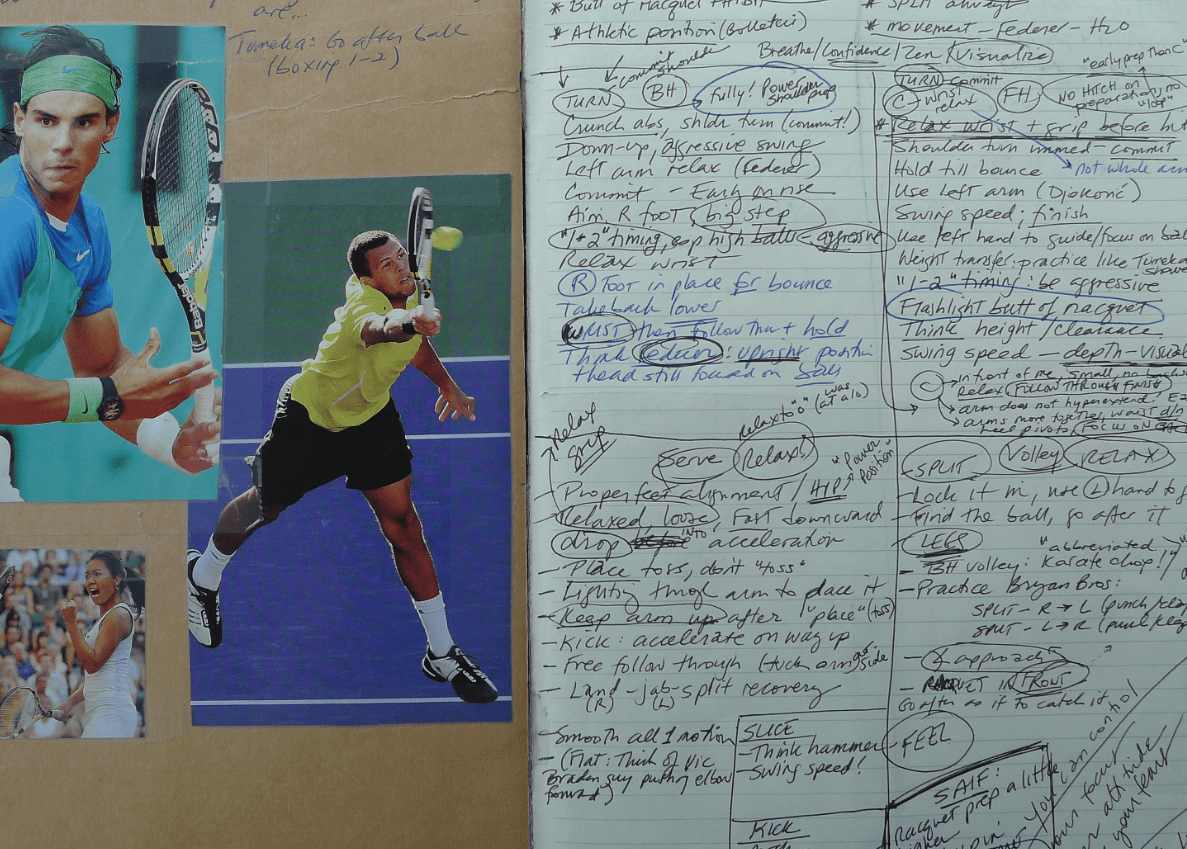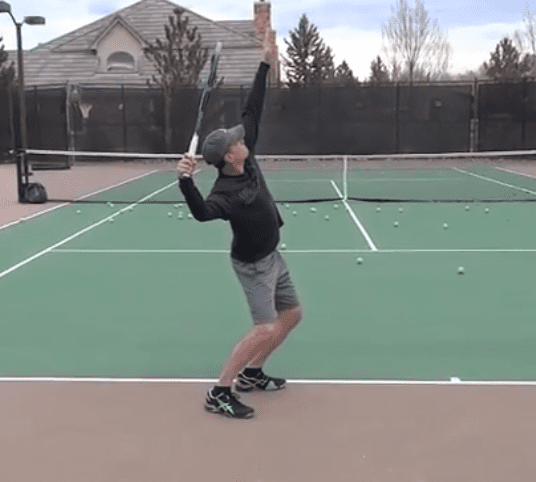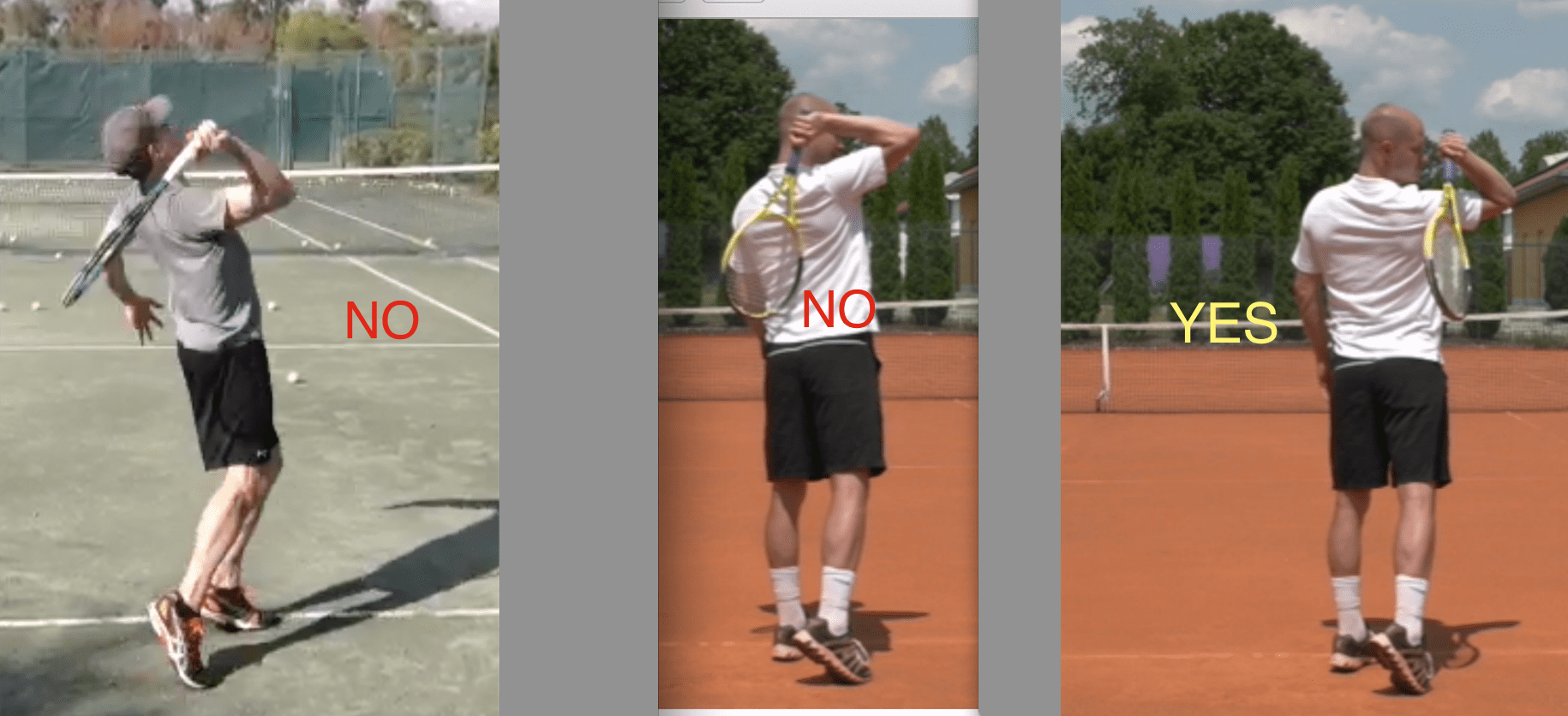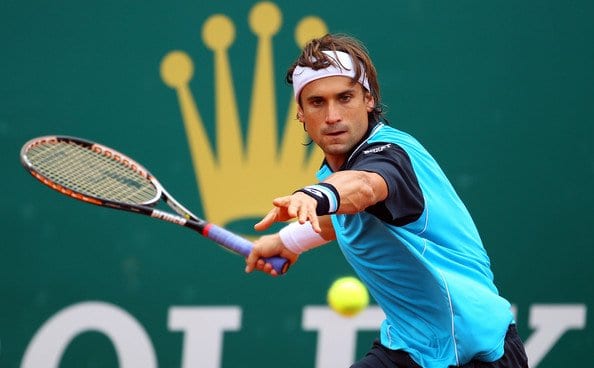“Reminders to Self”
Vital things I try to keep in mind in practice and matches.
Until I started this blog I was keeping notes of lessons learned in a tennis journal I’d carry around in my bag, which as you can see from the photo below was getting a little out of hand (a Feb 2012 photo of my journal’s front-page “summary”). This page is my attempt to organize the clutter electronically into a running list of key “Reminders to Self”– vital things I try to keep in mind in practice and matches. I tweak it often.
Until I started this blog I was keeping notes of lessons learned in a tennis journal I’d carry around in my bag, which as you can see from the photo below was getting a little out of hand (a Feb 2012 photo of my journal’s front-page “summary”). This page is my attempt to organize the clutter electronically into a running list of key “Reminders to Self”– vital things I try to keep in mind in practice and matches. I tweak it often.
Note: Keep in mind that I’m a righty when you see references to my “R” or “L” arm/side.
EVERY TIME I PLAY
- Play loose, relax the arm and body. Scan the body for tension. When playing tight, try focusing on relaxing the wrist first– that tends to help relax the entire arm, which translates into more looseness overall. When particularly tense or nervous, try shrugging the shoulders tensely with a deep breath then drop them and exhale. Remember how much power is generated by swing speed versus “muscling the ball.”
- Act confident, use positive body language even when I’m feeling down on myself. As Jeff Greenwald has pointed out, if you start “acting the part” even when you’re not feeling great, you’re more likely to feel what you’re acting.
- Stay grounded, bend the knees, athletic position. Nick Bollettieri said on one of his videos, “Good things happen to players who bend their knees.” Remember how much power comes from the legs. Be sure to “stay with your shot” long enough (think “One thousand one”).
- Keep the head still. Think Federer, whose head stays still and relaxed upon impact.
- Keep racquet speed up–don’t push the ball: When things aren’t clicking, my tendency used to be to “push the ball.” Not anymore. Now I think about generating more spin and accelerating through the shot.
- Breathe. Critical to rhythm and to eliminating tension in the body (and mind).
- Embrace the “good” mistakes. Go easy on yourself when things aren’t perfect. Give yourself credit for “good mistakes” that are helping you move in the right direction.
- During points: “Watch the ball, Move your feet, Trust your swing… Focus on INTENTION–where you want to place the ball–not stroke mechanics…” Saif Syed and Yann Auzoux have reinforced this great advice to apply before matches, which also is a good reminder to bring into practices when I’m tight.
- Be grateful for your ability to be playing at all. Put things in context.
- When things aren’t clicking consider the following:
* Is your wrist tight? Relax it.
* How’s your spacing?
* How’s your timing?
* Are you seeing the “fuzz/seams” of the ball?
* Are you decelerating and “pushing” the ball?
* Are you bending your knees?
* Are you finishing the swing and “staying” with your shot?
* Stop thinking about technique and VISUALIZE the outcome you want. Then just do it.
* Think “BOUNCE- HIT” to find your rhythm again – don’t just say it as the ball comes to you, do it as it bounces and hits your opponent’s racquet too
SERVE
- Use Jeff Greenwald’s “B, P, R” routine (Breath, placement, relaxed arm). (1) Take a deep breath as I walk to the line to establish my presence and decide on type of serve and placement; (2) Imagine the ball traveling toward my target; (3) Scan and release excess tension from my shoulders and arm.
- Visualize a winning trophy position; remember this involves relaxed opening of the shoulders towards the back of the court (think Jeff Salzenstein’s “elbow the enemy!“), which is a key to getting maximum power. (Think “bow and arrow” position too during the loading/cocking phase).
- Racquet drop position is NOT “scratch your back” like you were told as a beginner (terrible advice). It’s along the right edge of the body and racquet comes up on edge to set up properly for pronation. Practice shadow swings with mirror, or back fence, slowly until feels natural then increase speed. Also practice trying to come up on edge and hit ball with edge of the racquet.
- Hit UP with fully extended arm at point of impact. Think of shoulder “rolling over” as Nick Saviano talks about.
- “Admire” the ball (i.e. really watch it) and keep the head up and focused on the ball during impact! Do not shift focus into the court
- Keep upper body facing towards R net post a little longer. Power doesn’t come from rotation in serve.
- Toss around “12:30/1:00pm” and more into the court and go after it! Practice serve and volley drill to make sure momentum going INTO the court.
- Don’t shuffle the feet! If you need to move around, the toss is bad and you shouldn’t hit it.
- Let it rip through the finish – don’t decelerate upon impact!
- Finish movement with momentum INTO THE COURT, not trailing to the left! (Think Mark Kovacs tip about left arm to prevent over-rotation after contact)
- Watch this video by Tomaz Mencinger for reminders on practicing the fundamentals and looseness
FOREHAND (TOPSPIN)
- Early preparation and shoulder turn: Use L hand to initiate shoulder turn and set up racket at 45 angle
- Keep the racket moving, the loop never stops
- Use L arm like the pros: don’t let it drop upon impact. Your entire upper body moves as a unit (shoulders and hands)
- Keep the “C” loop relatively compact: Don’t let the racket get too far behind you. The racket should be ready to execute the “HELLO” movement the instant the ball is in my “zip code”
- Racquet head stays closed (think of palm facing more towards ground) through the preparation/C until HELLO (Do not do old habit of rotating/opening wrist to the right before that!)
- Remember that power comes hugely from LEGS and from the chest/shoulders working as a UNIT with a loose arm
- Racket speed brings power, not muscling the ball with the arm
- The hip initiates the racket drop (“Hello“) and moves first, and everything follows
- Stay grounded! Knees bent. Don’t pull up on the shot.
- Don’t break wrist on impact and follow through: Think “Goodbye”/Check your watch/windshield wipers
BACKHAND (TOPSPIN)
- Early preparation, full shoulder turn, aim shoulder at the ball
- Racket all the way back!!
- Accelerate during swing
- Arms should be extended during swing, not bent
- Think forward on impact
- Back leg pivots so shoelaces pointing to opposite wall, weight on front foot and into the court
- Stay with your shot– grounded! Count “One thousand one”
VOLLEYS
- Knees bent, stay low– but on balls of feet
- Split step just before opponent hits the ball
- Meet ball out in front – think catching and going for the ball
- Don’t over-turn the shoulders or bring the racquet back too far… Think of a simple wrist movement R or L to initiate so the racquet is forced to stay in front of the body (Milos)
- Keep elbow somewhat close to (and slightly in front of) body on FH side so arm can only move forward on the volley. But keep it loose: don’t want to be robotic.
- Power comes from the legs/body moving into the shot
- Keep wrist firm
- Think placement before making contact
RETURN OF SERVE
- Split step a split second before opponent makes contact with the ball
- Meditate on the ball as your opponent tosses, and watch what happens to it.
- Shorten the backswing
SLICE
- Shoulder turn!
- Start racquet high (think kind of “hidden” behind head)
- Lean into shot on balls of feet
- Follow through with crossover step behind as you move into the court
- Long, smooth finish (some coaches say slightly slower racket speed than regular BH, others say the opposite…??)
- Swing finish is more across the body than old-school teaching (came to same conclusion after working through this on my own but had doubts until I saw this great video from Jeff Salzenstein validating it)




